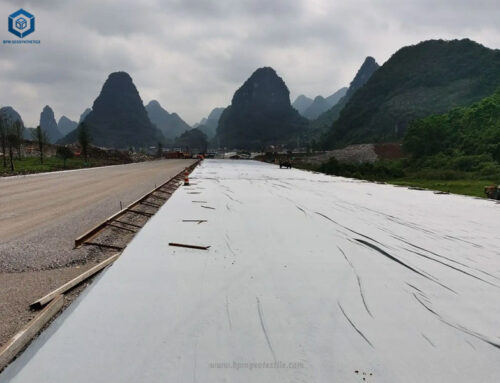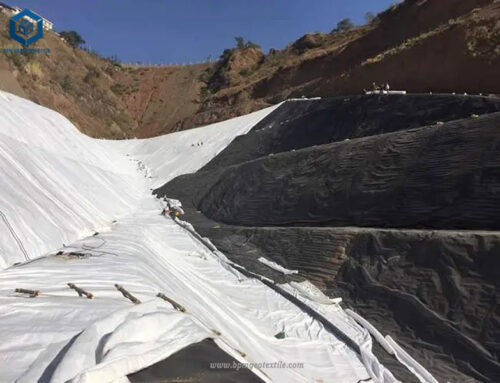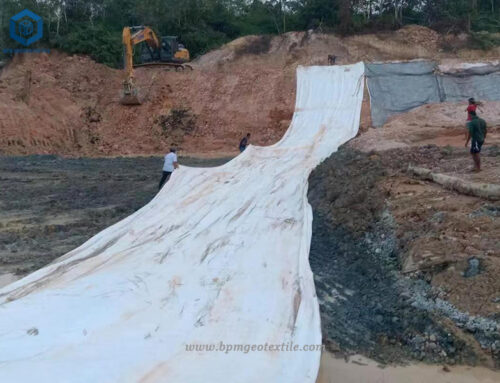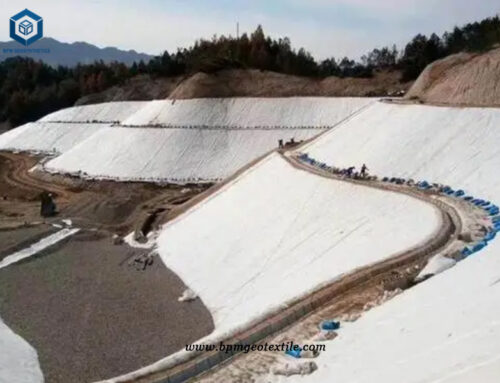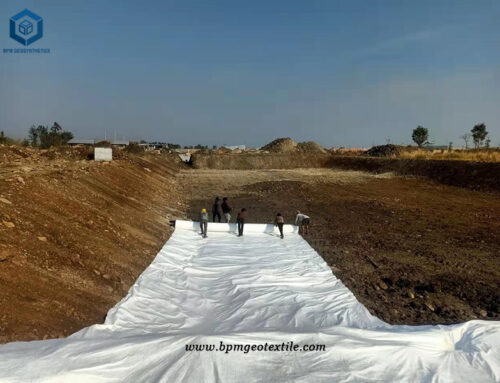Geofabrics, also rknown as geotextiles or geo fabrics, are soil separation and filtration products widely employed in civil construction and environmental applications. In civil construction, geotextiles serve the purpose of preventing the mixing of sub-base soils with granular layers, while facilitating the filtration of surface water to impede the passage and migration of stones and soil particles into the sub-base. Environmental applications involve utilizing geofabrics as protective cushions beneath or above geomembrane liners, mitigating the potential risk of puncturing caused by coarse aggregate rocks. Geofabrics play a crucial role in maintaining the integrity and functionality of construction and environmental projects.
BPM Geosynthtics offers quality fabrics and are available in varying strengths and thicknesses.
1. What Are Geofabrics?
Geofabrics are versatile permeable textile materials that play a vital role in various applications involving soil. They are designed to perform functions such as separation, filtration, reinforcement, protection, and drainage, making them indispensable in environmental, civil construction, and landscaping projects.
Geofabrics have gained significant importance in the field of geotechnical materials and find extensive use across diverse industries. They possess exceptional qualities, including excellent filtration capabilities, efficient drainage properties, effective isolation, reinforcement, and protection functions. Geofabrics are lightweight yet possess high tensile strength. They exhibit impressive permeability, resistance to high temperatures, freezing, aging, and corrosion. These properties enable them to function optimally when correctly installed.
Geofabrics has better filtration function. Geofabrics allow water to flow through while effectively retaining soil particles, fine sand, and small stones. This ability to maintain the stability of water and soil engineering is crucial in preventing erosion and maintaining structural integrity.
Geofabrics also offer excellent drainage capabilities. They facilitate the formation of drainage channels within the soil, enabling the removal of excess liquid and gas from the soil structure. This helps prevent waterlogging and ensures proper soil moisture management.
Geofabrics contribute to the protection of soil. When water flow exerts pressure on the soil, geofabrics effectively diffuse, transfer, or decompose the concentrated stress. This prevents soil damage caused by external forces and helps preserve the integrity of the soil structure.
Geofabrics are versatile textile materials that provide essential functions such as filtration, drainage, separation, reinforcement, and protection in various applications. Their unique properties and capabilities make them indispensable in projects involving soil stabilization, erosion control, and environmental management.
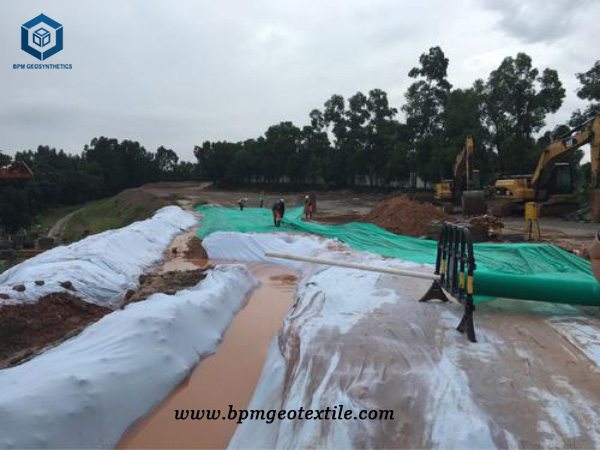
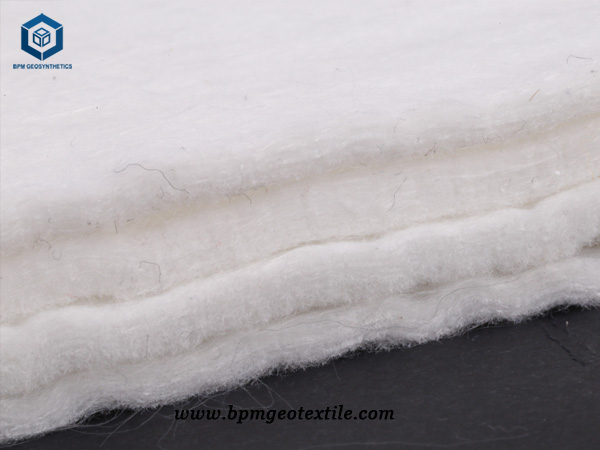
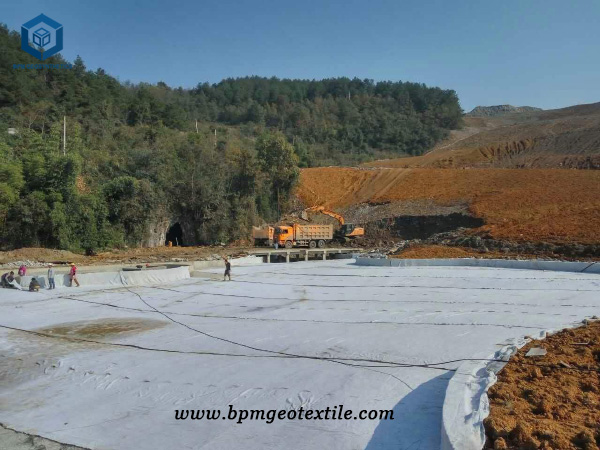
2. What Are Geofabrics Used For?
Geofabrics have a wide range of applications in various industries. Some common uses of geofabrics include soil separation, filtration, reinforcement, protection, drainage, and erosion control. They are particularly effective in addressing concerns related to high water runoff and soil erosion.
In civil engineering and construction, geofabrics are used below ground layers to reinforce roadbeds and airport runways. By providing additional strength and stability, they enhance the load-bearing capacity of these structures and prevent deformation and rutting caused by heavy traffic.
Geofabrics are also extensively utilized in farmland water conservancy projects, such as those in Thailand where there are challenges of high temperatures, heavy rainfall, and soil erosion. To address these issues, thick filament geotextiles are recommended for providing isolation, protection, and increasing ground temperature to prevent frost heave damage to canals. These geofabrics, with a weight of 200 grams per square meter, can be used as the bottom layer of stone masonry, effectively fulfilling their purpose.
When selecting geofabrics for such projects, it is advisable to choose national standard filament geotextiles. These geotextiles have high strength, puncture resistance, and durability, ensuring long-term performance even in the presence of potential damages caused by construction activities or masonry in the channels. In contrast, non-standard filament geotextiles, which often contain excessive recycled materials, tend to have lower strength and are prone to significant damage, leading to project failures.
It is important to consider the appropriate width and roll length of geofabrics. These dimensions should be selected based on the specific length and overlap requirements of the channel sections, while also considering the convenience of construction workers. For optimal results, a recommended product width of 6 meters and a roll length of 50 meters have been found to be effective.
Geofabrics find applications in various industries for soil stabilization, erosion control, and water management. Their use in reinforcing roadbeds, protecting farmland, and ensuring the durability of water conservancy projects demonstrates their versatility and effectiveness in addressing specific challenges.
3. How to Choose Filament Geofabrics for Soil And Water conservation in Thailand?
When choosing filament geofabrics for soil and water conservation projects in Thailand, there are several factors to consider. Based on the given information, here are some guidelines:
3.1 Material Quality
Opt for high-quality geofabrics that meet national or international standards. Ensure the geofabrics are made from durable and reliable materials with good puncture resistance and strength.
3.2 Weight and Thickness
The specified nonwoven geofabric has a weight of 200g/m2, which is suitable for soil separation, filtration, and erosion control purposes. This weight provides adequate strength and stability for the intended applications.
3.3 Roll Size
The given roll size is 6m x 100m. Consider the project requirements, including the dimensions of the channels and the desired overlap, to determine the optimal roll size. The provided size is suitable for efficient installation and reduces the number of seams required during construction.
3.4 Quantity Calculation
To determine the quantity of geofabric needed, multiply the total area to be covered (100,000 square meters) by the desired weight per square meter (200g/m2). In this case, the total quantity required would be 20,000 kilograms (100,000 m2 * 200 g/m2).
3.5 Supplier Reputation
Choose a reputable supplier with a track record of providing high-quality geofabrics. Look for suppliers that have experience in soil and water conservation projects and can offer technical support and guidance. BPM Geosynthetics is your trusted geotextile supplier.
3.6 Budget Considerations
Evaluate the cost-effectiveness of the geofabric options while ensuring they meet the project requirements. Compare prices from different suppliers and consider any additional services they may offer, such as delivery or installation support.
4. About BPM Geosynthetics
BPM has been manufacturing and supplying many types of effective and states of the art geotextile, geomembranes, and other geosynthetics to over 36 countries. Our geosynthetic products are widely used across a variety of industries including waste containment, water containment, aquaculture, industrial project, energy project and mining projects, etc.

